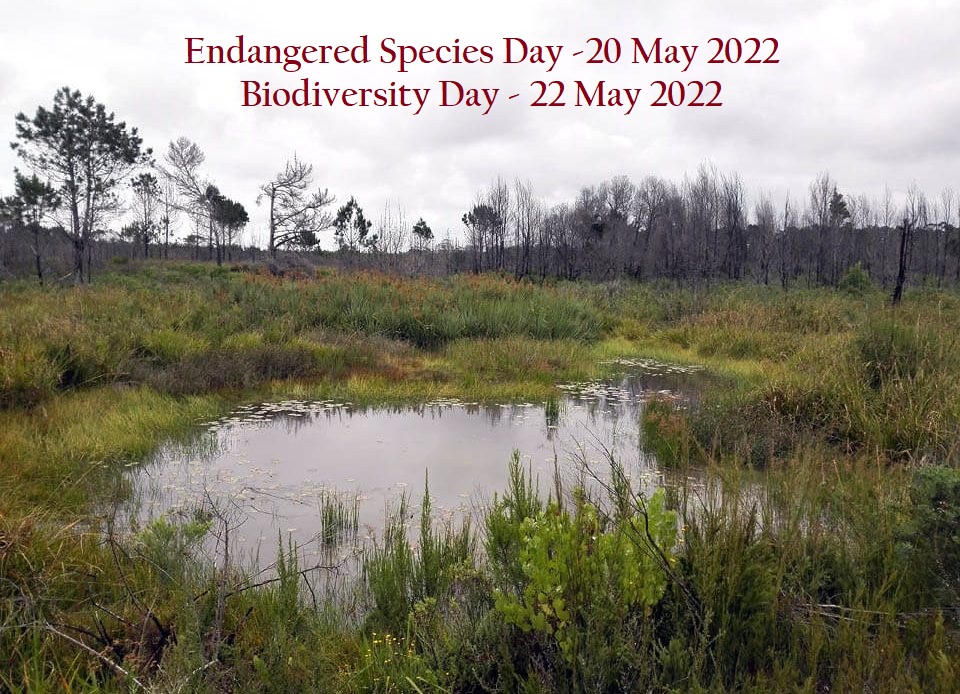This weekend we celebrate two important awareness days:
Endangered Species Day – 20 May 2022
Biodiversity Day – Sunday, 22 May 2022
The international theme for Biodiversity Day, 22 May 2022, is ‘Building a shared future for all Life’. The theme highlights how biodiversity is the foundation upon which we can build back better. Healthy and diverse ecosystems provide several life-support ecosystem services; including fresh water, food, medicine, shelter, energy and much more. The Western Cape consists of two biodiversity hotspots:
- Cape Floristic Region
- Succulent Karoo
According to the South African National Biodiversity Institute (SANBI) Red list, nearly a quarter of South African flora is threatened with extinction or of conservation concern. Ecosystems and species are threatened by alien invasive species, crop cultivation, urban expansion, and overgrazing. Thus, Endangered Species Day, on 20 May 2022, raises awareness about the fragile existence of species and reminds us why it is vital to protect endangered species from any further harm.
As custodian of the province’s natural environment, CapeNature is tasked with nature conservation and awareness, preserving biodiversity, and providing facilities for education, research, and training.
Legislative Protection
The National Environmental Management: Biodiversity Act 10 of 2004 (NEM:BA) aims to provide protection for threatened ecosystems and species by ensuring that the utilization of biodiversity is managed in an ecologically sustainable manner. In terms of the 2014 NEMA Environmental Impact Assessment Regulations (amended 2017), all proposals that trigger listed activities must submit Environmental Assessments to the provincial competent authority to receive Environmental Authorisation. Typical triggers for an Environmental Assessment:
- Within a protected area.
- Critical Biodiversity Areas and Ecological Support Areas as identified in bioregional plans, for example the Western Cape Biodiversity Spatial Plan.
- Within any critically endangered or endangered ecosystem
- Within a 5km radius from national parks, heritage sites, areas identified in terms of NEMPAA or from the core area of a biosphere reserve. Excluding the conversion of existing buildings where the development footprint will not be increased.
- Areas containing indigenous vegetations.
- Areas zoned or designated for conservation use.
- The clearance of an area of 300 square meters or more of indigenous vegetation.
How can SES help?
At Sharples Environmental Services, we have collectively more than 50 years’ experience in undertaking Environmental Assessments in which measures are taken to avoid or mitigate impacts that may harm biodiversity. We advise clients and undertake the applicable assessments, with relevant specialist input, in application for Environmental Authorization from the Department of Environmental Affairs and Development Planning. The environmental management measures we provide helps secure sustainable outcomes in proposed projects.
Contact us at: info@sescc.net or 021 554 5194













